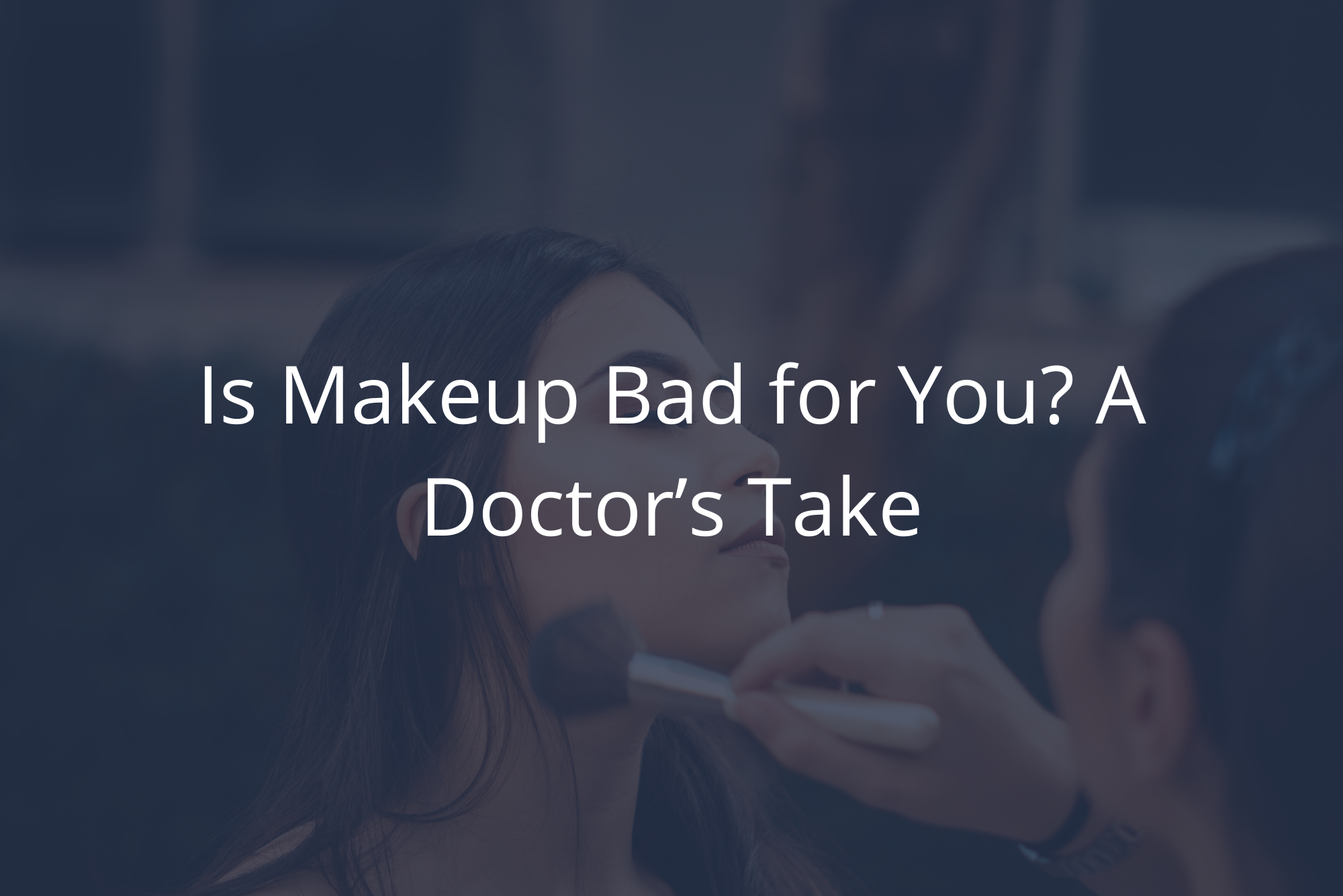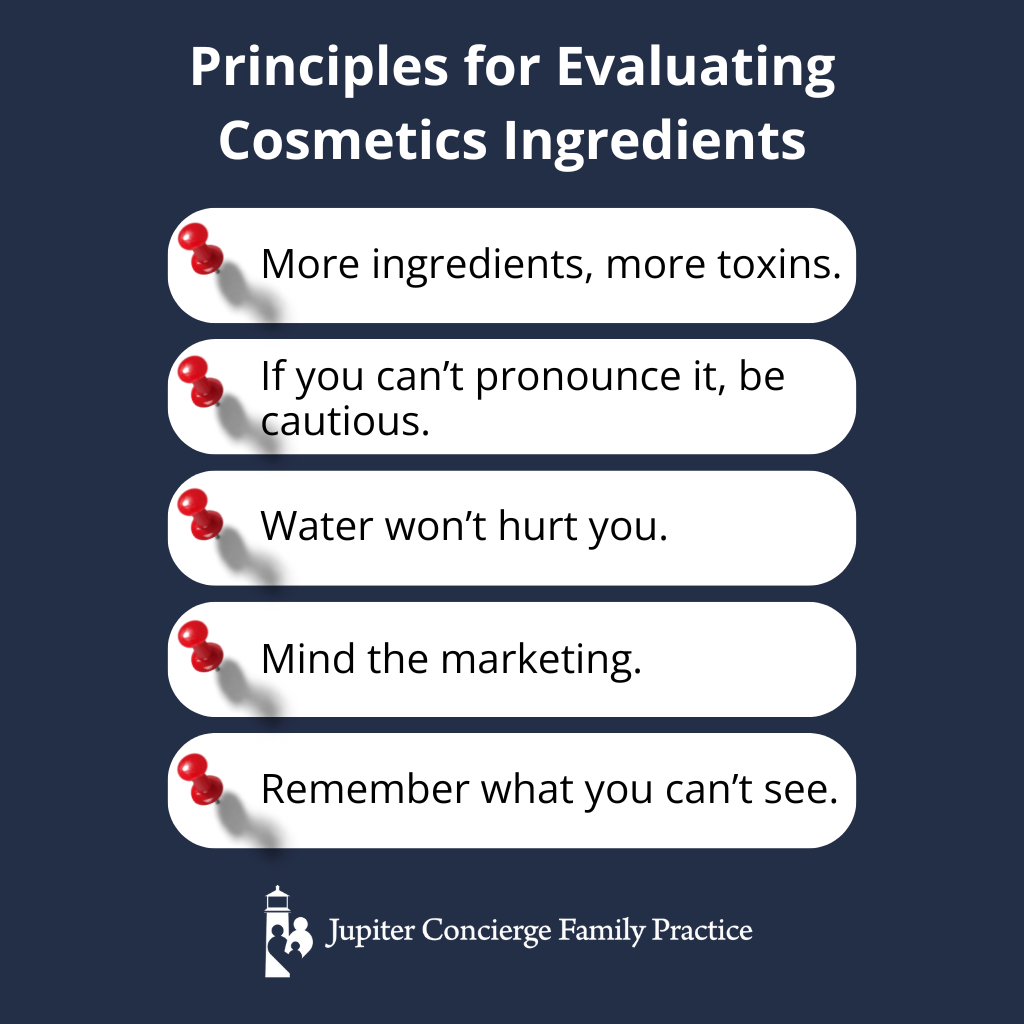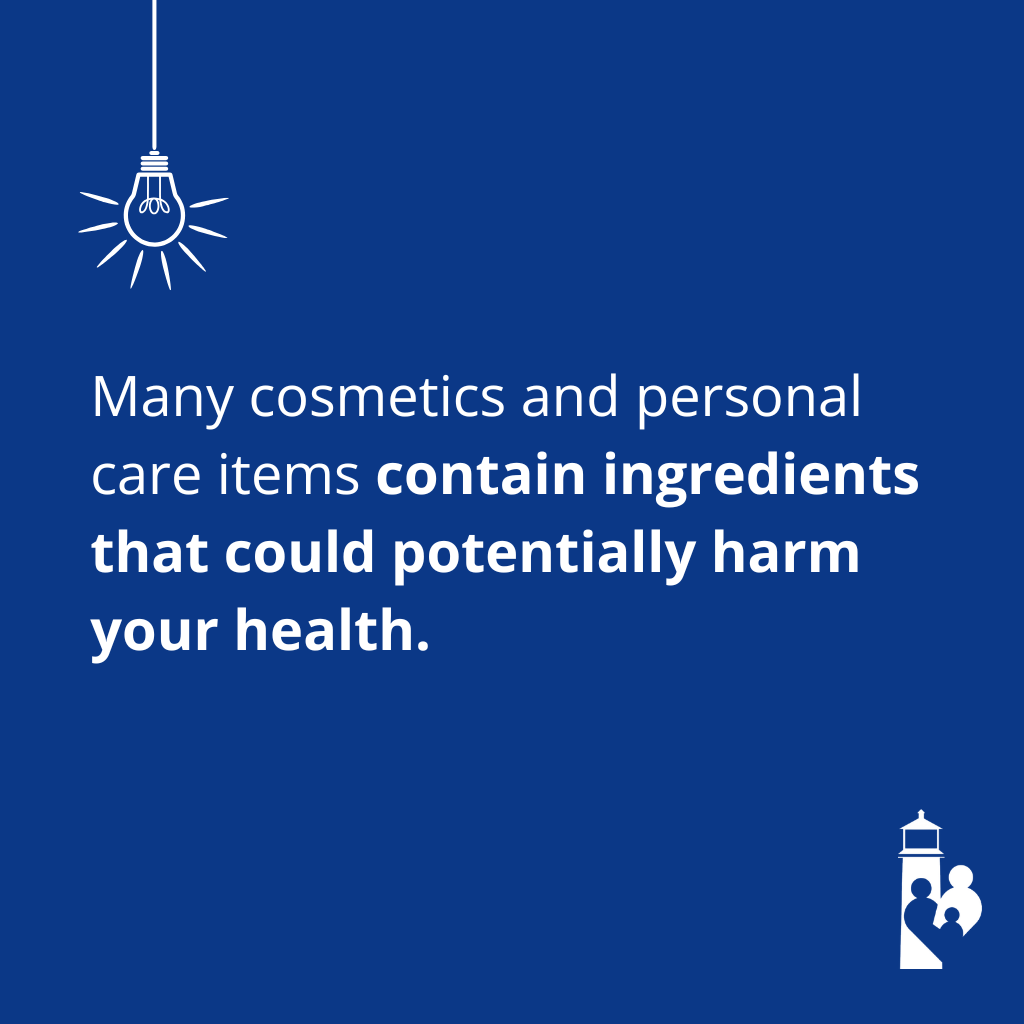
Whether it’s to cover a blemish, enhance your appearance, or reduce aging effects, skincare has become a multibillion-dollar industry.
The problem? Despite the U.S. being skincare’s global market leader, we have very little regulation over what goes into our products. Consequently, your makeup, lotion, or face wash could contain problematic ingredients.
We may think this isn’t such a big deal; we’re not eating our makeup. But the truth is that skincare products affect far more than the skin.
So, we have some important questions to answer: Is makeup bad for you? Are skincare products bad for you?
The short answer is the frustratingly ubiquitous it depends.
Let’s explore how to identify whether and when your makeup and skincare products are bad for you by discussing how skin functions, principles for reading skincare labels, and two helpful tools I recommend to make your life easier.
How Skin Works
Our skin is an organ, and like other organs, it absorbs what we put on it. In fact, we often use the skin as a means for delivering pharmaceuticals to the rest of the body. Topical medications like anti-inflammatory creams, hormone patches, and nicotine patches work because they’re absorbed through the skin into the bloodstream.
When we use makeup or skincare products, there’s a real potential for the chemicals in those products to enter our body. And trust me, many of these chemicals are not ones you want inside your body.
Unfortunately, the list of products we need to be wary of extends far beyond makeup and face wash. Anything we put on our bodies qualifies, even items we think of as healthy, such as:
- Sunblock
- Lotion/Moisturizer
- Anti-Aging Products
- Soap
- Antiperspirant/Deodorant
- Hair Care/Hair Color
- Perfume/Cologne
While this list isn’t comprehensive, it illustrates the extent to which we put products on our bodies.
Is Makeup Bad for You? The Troubling Truth
So, is makeup bad for you? The truth is, it can be. Many cosmetics and personal care items contain ingredients that could potentially harm your health.
To decipher which products are most harmful, reading labels is a must. Below are a few principles that will help you discern the least troublesome from the most:
- More ingredients, more toxins. The longer a product’s ingredient list, the higher the chance a harmful substance is present.
- If you can’t pronounce it, be cautious. Complicated chemical names often signal synthetic ingredients that pose risks.
- Water won’t hurt you. Skincare product ingredients need to dissolve into something, which means they require a solvent. Water is the safest solvent, but if you don’t see water on the list, a more concerning solvent may be lurking (for instance, toluene in nail polish). Besides potentially being toxic themselves, solvents also facilitate the absorption of the chemicals they contain into your bloodstream.
- Mind the marketing. There’s no shortage of products that claim various virtues, but remember, in a largely unregulated industry, such claims are often meaningless. Terms like all natural or vegan mean nothing with regard to whether your makeup is bad for you.
- Remember what you can’t see. Because most makeup and skincare products aren’t regulated by the FDA (except for dyes), companies aren’t required to list all their ingredients on the labels. Products could very well contain harmful components without your awareness.
Ingredients of Highest Concern
Makeup is certainly bad for you when it’s filled with solvents and chemicals you don’t want in your bloodstream. Such chemicals fall into a range of worrisome categories, including:
- Carcinogens: Substances that increase the risk of developing cancer.
- Xenoestrogens: Chemicals that mimic the natural estrogen in your body, interfering with your hormone balance and potentially affecting your fertility.
- Irritants and allergens: Ingredients that may cause inflammation or reactions and contribute to conditions like asthma, eczema, or dermatitis.
One major reason for some of the toxic ingredients in makeup is preservation. To prevent bacteria and mold from growing in products for longer periods of time, companies add chemical preservatives. The problem is that these preservatives are often xenoestrogens or toxic substances like formaldehyde.
While the U.S. does limit the amount of formaldehyde in products, as of today, the ingredient is still permitted (though some states have taken stronger stances). Makeup and personal care products from other countries, of course, may have higher levels depending on their local regulations.
Tools to Help You Shop Smart (and Safe)
With the abundance and variety of chemicals present in makeup and skincare products, it’s impossible to list every potential hazard here. Even if I could, such a list would hardly be practical in the drugstore aisles unless you have hours to spend and a chemistry degree!
Instead, I’d like to share two resources I’ve discovered and appreciate.
The Dirty Dozen
The first is a “Dirty Dozen” list from the David Suzuki Foundation, outlining the top 12 worst offenders to watch out for in your makeup and skincare purchases:
- BHA and BHT
- Coal tar dyes (p-phenylenediamine and colors listed as “CI” followed by a five-digit number)
- DEA-related ingredients
- Dibutyl phthalate
- Formaldehyde-releasing preservatives
- Parabens
- Parfum (a.k.a. fragrance)
- PEG compounds
- Petrolatum
- Siloxanes
- Sodium laureth sulfate
- Triclosan
Each of these ingredients gets in-depth treatment on the foundation’s website. That said, just being aware of these names and aiming to avoid them in ingredient lists is all you truly need.
The Yuka App
The second resource is one I’ve shared about in the past: the Yuka app.
Besides helping you shop for healthier food at the market, the Yuka app provides insight into the relative safety of makeup and personal care products as well. The company maintains a database of over 2 million cosmetic products, with a safety rating for each. To ensure transparency, Yuka doesn’t allow outside advertising and receives all its funding from user subscriptions.
So, when you’re considering a product at the store, you can scan the item or search for it in the Yuka app. You’ll then see the item’s score and, if needed, possible alternatives to reach for on the next shelf.
I appreciate the practicality and simplicity an app like this brings to an otherwise complicated and frustrating process.
(Note: I’m not affiliated with either the David Suzuki Foundation or the Yuka app in any way. I just find both resources helpful.)
Is Makeup Bad for You? Final Thoughts
When considering whether to use any product, I recommend taking a simple, three-question approach. Ask yourself:
- Why are you using it?
- What benefits do you want to get out of it?
- What, if any, risk are you willing to take when you use it?
If the risks are low and the benefits high, you have your answer. And vice versa.
While we’ve established that, yes, makeup can be bad for you, you have the power to choose healthier options by taking advantage of the tools above. I hope that, like me, you find they simplify your shopping and reduce the frustration around making healthy choices!

Dr. David Rosenberg
Dr. Rosenberg is a board-certified Family Physician who obtained a BS in Chemistry at Georgia's Mercer University in 1983 and a medical degree from the University of Miami in 1988. He completed his residency in Family Medicine at The Washington Hospital in Washington, Pennsylvania, in 1991 and then practiced Emergency Medicine at Palm Beach Gardens Medical Center for two years. In 1993 he started private practice in Jupiter.
Dr. Rosenberg has been married to his wife Mary for 38 years and they have three grown children together. Some of his interests include being a huge baseball fan, sailing, snow skiing, self-development, and learning to play piano.


